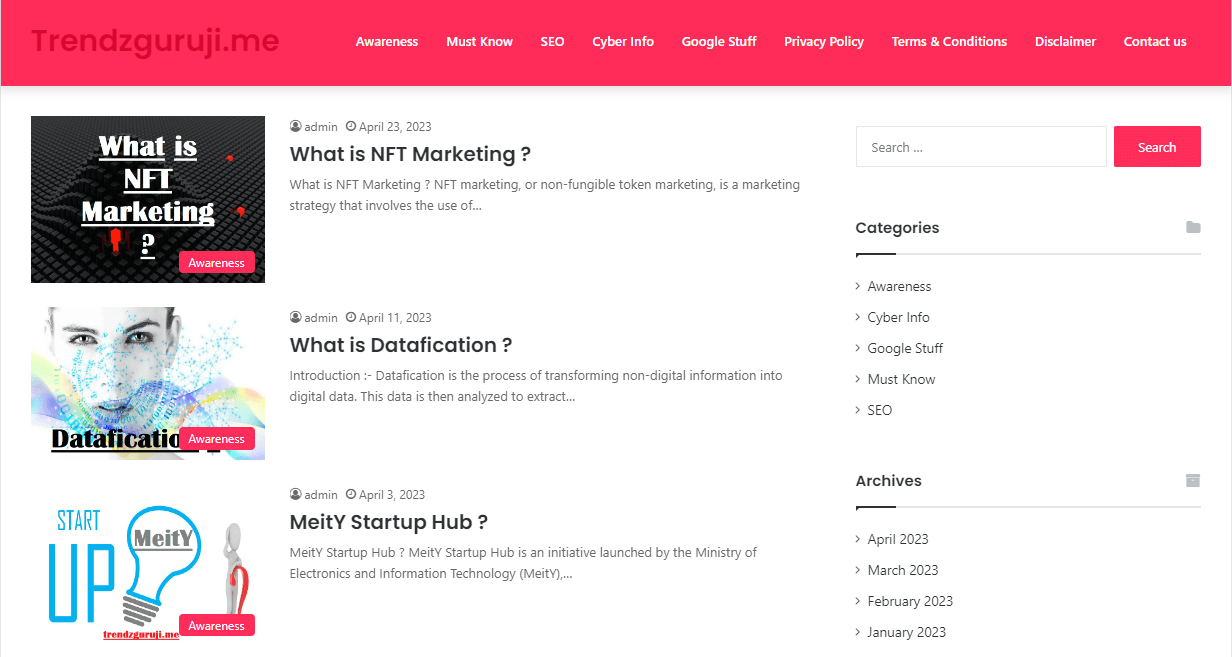

Tech
What Is a PKI Certificate? How To Get One For Yourself
When the internet was first introduced to the world of computers, it was a groundbreaking idea for transmitting data quickly from one place to another. Over time, people became concerned about protecting data transmitted through the internet, but it was thought to be a simple problem to solve.
However, when citizens began to use the internet for commerce to share confidential details such as credit card information, banking details, income data, and so on, the need for such data protection became more critical. That’s when a PKI certificate became a must-have document.
Are you wondering what a PKI certificate is? How can it protect clients and servers? Read on to know everything about the PKI certificate.
What is a PKI certificate?
Public Key Infrastructure certificates are data structures that provide sensitive details regarding their particular certificate applicants. A PKI certificate is an electronically issued document similar to an actual identification card or passport in the digital domain. The certificate is a digital identity that one can trust. When interacting across unknown sources, it is used to recognize and authenticate individuals, servers, and items. They usually use mathematical models to:
- Authenticate servers, apps, portals, email clients, app creators, and publishers.
- Encrypt and decrypt data in transit—for example, documents and archives on servers.
- Stabilize internet data transfer, including e-commerce transactions.
- Attach devices, files, and emails with digital signatures.
With so many uses and benefits of PKI, it is no surprise that the PKI industry is expected to grow to 3.6 billion USD by the end of 2024.
What are various types of PKI certificates?
There are a few types of PKI certificates, and you must understand the use of each one before determining where to get it for your website. Here is a list of the PKI certificates:
1. SSL/TLS Certificates
When it comes to PKI certificates, SSL/TLS is the most commonly mentioned certificate. Website owners use it to encrypt contact between a portal (server) and a recipient (browser). They use PKI technologies to help with identity protection and authentication.
When you request an SSL certificate, the PKI certification authority assigns an SSL/TLS credential to the hostname (website’s address or IP address). Then the authority adds the digital stamp to it and signs the certification with its domain or, more generally, its intermediate root certificate and completes the authentication process.
2. Code Signing Certificates/Software Signing Certificate
A code signing credential enables you to sign code using a personal and public key scheme identical to SSL and SSH. When a certificate is demanded, a public and a private key pair are created. The private key is never submitted to the certificate supplier and remains on the applicant’s phone. The public key is sent chiefly along with the credential query to the vendor, who then issues the certificate.
A certificate is a document that includes documents that fully recognize an object and is provided by a Certification Authority (CA) after the entity’s identification has been validated.
3. Email Signing Certificates
An email digital signature certification, also known as a S/MIME certificate, is a public key infrastructure (PKI) mechanism that improves email protection by allowing you to sign and encode your emails securely. It encrypts and decrypts email messages and attachments using asymmetric keys from public-key cryptography.
As a result, an email signing certificate protects data in motion as well as at rest. The user would immediately realize whether an email had been changed or tampered with thanks to its hashing feature. Email attacks that utilize spying and email spoofing — two prevalent email phishing tactics — would be protected by an email signature certificate.
4. Document Signing Certificates
Any organization, despite the size, must submit documentation to its clients. This documentation may include a fee, statement, brochure, prospectus, annual report, and so on. They do this by the use of email or other networks. It is vital to safeguard the integrity of these records since they contain sensitive material. It is essential for the sake of user confidence that these records be transferred in a safe setting. A ‘Document Signing Certificate’ is needed to meet this pressing need.
How to get a PKI certificate for your company?
As previously mentioned, a website owner must receive a certificate from a Certificate Authority or CA to have PKI certification. Numerous vendors have established themselves as CAs. Before granting you a certificate, they need you to demonstrate the possession of your website in any manner.
For example, suppose you’re attempting to purchase an SSL credential for a website at domain.com. In that case, you may need to submit an email to the CA from [email protected], which is an account restricted to those with managerial control over the domain name. You may then upload the credential to your web server after you have obtained it. Some of the leading CAs that can get you any of the PKI certificates are GoDaddy, Comodo SSL, DigiCert.
In conclusion
The PKI Certificates provide a sense of trust between two unknown parties. It is essential for businesses, especially those who rely more on the internet, to get themselves certified. It not only eliminates any kind of threat to your business but also provides the base it needs to be deemed as an acceptable enterprise. Before you get yourself certified, remember to validate the authenticity of the concerned certificate company.
Tech
Unveiling the Technological Odyssey: TrendzGuruji.me and the Evolution of Computers

In today’s fast-paced world, where technology is advancing at an unprecedented rate, staying abreast of the latest trends and developments is paramount. Among the myriad platforms offering insights into the world of computers, TrendzGuruji.me stands out as a beacon of comprehensive knowledge and understanding. In this article, we embark on a journey through the evolution of computers, uncovering the mission that propels TrendzGuruji.me forward, exploring the latest trends in computer hardware, and offering invaluable tips and tricks for computer enthusiasts. Additionally, we delve into the subscription benefits that make TrendzGuruji.me an indispensable resource in the tech landscape.
Evolution of Computers
The evolution of computers is a fascinating journey that spans several decades, marked by significant milestones and breakthroughs. From the humble beginnings of mechanical calculating devices to the era of modern supercomputers and quantum computing, the trajectory of computer development has been nothing short of remarkable.
- Early Computing Devices: The roots of computing can be traced back to ancient civilizations, where rudimentary tools were used for basic arithmetic calculations. However, it was in the 20th century that the modern era of computing began with the advent of electronic computers. Pioneering machines like the ENIAC and UNIVAC laid the foundation for the digital revolution.
- The Personal Computer Revolution: The introduction of the personal computer in the 1970s and 1980s revolutionized the way individuals interacted with technology. Innovations by companies like Apple and IBM brought computing power to the masses, fueling the rise of the digital age.
- Advancements in Processing Power and Miniaturization: Over the years, Moore’s Law has driven exponential growth in processing power, leading to the development of faster and more efficient microprocessors. Simultaneously, advancements in miniaturization have enabled the creation of smaller, more powerful devices, such as smartphones and wearable tech.
- Emergence of Quantum Computing: As we look to the future, the field of quantum computing holds immense promise. By harnessing the principles of quantum mechanics, quantum computers have the potential to solve complex problems at speeds that are orders of magnitude faster than classical computers.
TrendzGuruji.me’s Mission
At the heart of TrendzGuruji.me lies a steadfast commitment to providing users with unparalleled insights into the world of computers and technology. The platform’s mission is multifaceted, encompassing several key objectives:
- Education and Awareness: TrendzGuruji.me strives to educate and inform users about the latest trends, developments, and innovations in the field of computer science. By offering in-depth articles, tutorials, and guides, the platform empowers users to expand their knowledge and stay ahead of the curve.
- Community Engagement: Central to TrendzGuruji.me’s ethos is the belief in fostering a vibrant and engaged community of computer enthusiasts. Through forums, discussion boards, and interactive features, the platform encourages collaboration, knowledge sharing, and networking among users.
- Curated Content: TrendzGuruji.me prides itself on delivering curated content that is both relevant and insightful. Whether it’s breaking news in the world of tech, expert analysis of industry trends, or hands-on reviews of the latest gadgets, users can trust TrendzGuruji.me to provide them with accurate and reliable information.
- Empowering Creativity: Beyond mere consumption of information, TrendzGuruji.me aims to inspire creativity and innovation among its users. Through tutorials, project ideas, and case studies, the platform encourages individuals to explore new avenues and push the boundaries of what’s possible in the realm of computer science.
Latest Trends in Computer Hardware
In the ever-evolving landscape of computer hardware, staying abreast of the latest trends and developments is essential for enthusiasts and professionals alike. Here are some of the most noteworthy trends shaping the industry:
- Rise of AI and Machine Learning: Artificial intelligence (AI) and machine learning (ML) have emerged as dominant forces in the world of computing. From intelligent assistants like Siri and Alexa to advanced data analytics platforms, AI is revolutionizing how we interact with computers and process information.
- Advancements in Graphics Processing: With the growing demand for high-performance gaming and multimedia applications, graphics processing units (GPUs) have become increasingly powerful and sophisticated. The latest GPUs boast real-time ray tracing capabilities, enabling stunning visual effects and immersive gaming experiences.
- Expansion of Cloud Computing: Cloud computing continues to gain traction as organizations seek scalable, cost-effective solutions for storing and processing data. From cloud-based productivity suites to infrastructure-as-a-service (IaaS) platforms, the cloud is reshaping the way businesses approach IT infrastructure.
- Integration of IoT Devices: The Internet of Things (IoT) is ushering in a new era of interconnected devices and smart technologies. From smart homes and wearable devices to industrial sensors and autonomous vehicles, the proliferation of IoT devices is driving demand for powerful, energy-efficient computing solutions.
Features
TrendzGuruji.me offers a plethora of features designed to cater to the diverse needs of its users:
- Comprehensive Articles and Guides: From beginner-friendly tutorials to in-depth technical analyses, TrendzGuruji.me provides a wealth of educational content covering a wide range of topics in computer science and technology.
- Interactive Forums and Discussion Boards: Engage with like-minded individuals, seek advice from experts, and participate in discussions on the latest trends and developments in the tech industry.
- Hands-on Reviews and Product Recommendations: Stay informed about the latest gadgets, hardware components, and software applications with unbiased reviews and recommendations from TrendzGuruji.me’s team of experts.
- Exclusive Interviews and Insights: Gain valuable insights from industry leaders, innovators, and thought influencers through exclusive interviews, articles, and guest contributions.
Tips and Tricks for Computer Enthusiasts
Whether you’re a seasoned professional or a novice enthusiast, TrendzGuruji.me offers a wealth of tips and tricks to help you make the most of your computing experience:
- Optimize Performance: Learn how to fine-tune your system settings, optimize resource utilization, and troubleshoot common performance issues to ensure your computer runs smoothly and efficiently.
- Enhance Security: Protect your data and safeguard your privacy with expert tips on cybersecurity best practices, antivirus software recommendations, and proactive measures to prevent malware attacks.
- Master Productivity Tools: Discover hidden features, shortcuts, and productivity hacks for popular software applications such as Microsoft Office, Adobe Creative Suite, and Google Workspace to streamline your workflow and boost your productivity.
- Explore Emerging Technologies: Stay ahead of the curve by experimenting with cutting-edge technologies such as virtual reality (VR), augmented reality (AR), blockchain, and cryptocurrency, and learn how to leverage them to your advantage.
Subscription Benefits
Unlock a world of premium content and exclusive perks with a subscription to TrendzGuruji.me:
- Ad-Free Experience: Enjoy uninterrupted browsing with an ad-free experience that eliminates distractions and enhances your reading pleasure.
- Early Access to Content: Gain early access to the latest articles, tutorials, and reviews before they’re released to the public, giving you a competitive edge in staying informed.
- VIP Support: Receive priority customer support from TrendzGuruji.me’s dedicated team of experts, ensuring that your questions and concerns are addressed promptly and satisfactorily.
- Exclusive Discounts and Offers: Take advantage of special discounts, promotions, and exclusive offers on merchandise, events, and partner products available only to subscribers.
Conclusion
In the dynamic and ever-changing world of technology, staying informed is paramount. TrendzGuruji.me stands at the forefront of this endeavor, providing users with comprehensive insights, expert analysis, and valuable resources to navigate the complex landscape of computer science and technology. From the evolution of computers to the latest trends in hardware and software, TrendzGuruji.me is committed to empowering individuals to unleash their full potential in the digital age. Subscribe today and embark on a journey of discovery with TrendzGuruji.me as your trusted companion in the world of tech.
FAQs
Tech
Standout Attributes To Include For Developing The Taxi App

Taxi apps are an online business that has witnessed constant growth in the market over the years. One of the biggest reasons behind this is the increasing evolution of users’ demands and the use of smartphones today. The food ordering app helps users and makes their experience very smooth. It even helps firms boost their profits.
However, with increasing competition in the market, many businesses fail to have a powerful effect on users and engage them in their apps. If you are a business facing the same problems, you are on the right blog. Here are some advanced features to help retain your customers on the platform longer.
List of interesting features to include in the taxi app
Ridesharing
One of the main reasons why taxi apps are becoming popular is because of ride-sharing options. It is a friendly option as users have to pay half of the total expense of a trip to their destination. The other co-passenger who wants to go to the same destination or somewhere in between pays for the other half of the cost.
Two-Factor Authentication For Security
Two-factor authentication is important for the app’s users’ security and sensitive data safety. This method makes it harder for attackers to access customers’ devices or personal accounts and steal crucial data. 2FA requires users to clear 2 levels of security before accessing their account.
Various online security systems furnish this type of feature. For example, entering a username and password in the first level of security. Businesses can use the push notification security on the second level of security authentication to get approved access to the account.
Premium Membership For Riders
Providing premium plans guarantees riders will be charged the same fixed price regardless of traffic peak timing or any other situation. You can offer different subscription models to users, giving them the choice to pick any one or even more than one.
Multiple Fleet Option
The taxi app allows users to select a fleet based on their preferences and requirements. As an online taxi service provider, you must offer various options, from the most affordable and comfortable to the most luxurious fleets. This gives users multiple options when making a trip.
Sos System
In today’s world, crimes are increasing while traveling. For the safety of the users, having this feature in the app is vital. This lets the customers send the emergency digital distress signal for assistance. This feature even lets you select a few contacts to whom this emergency message will be forwarded along with the emergency assistance provider. This attribute is essential as it can be a lifeline in dangerous situations.
Push notifications
Push notifications are the marketing tools that help the business increase its conversion rates. It reminds users to use the app and take action. The more engaging and short the push notifications, the more effective they will be. It increases the chances of higher user engagement. This feature can send notifications and inform them about the app’s discounts and offers on the meals they order.
Favorite Address
This feature lets users save time and effort when entering all the details when booking a ride. It also lets them save frequently visited locations like their homes, offices, etc. This increases the user’s convenience, as it becomes effortless for them to make a trip by tapping on their favorite address instead of entering one.
Data Analytics System
Analyzing app users’ data helps any business solve issues and enhance the various aspects of the food delivery service. They can examine information related to traffic conditions, weather conditions, real-time data analysis, delivery costs, and much more. This data helps the firm know where improvement is needed.
Tips To Help In The Development Procedure Of The Taxi App
Here are the tips to remember when selecting any company for taxi booking app development services to help you build a cutting-edge app to meet all your enterprise requirements, resulting in better revenue channels.
Decide On Your requirements
Deciding on the requirements helps comprehend the project’s needs and goals. Specifying your business needs is paramount before partnering with an app development firm. Starting the development process without clearly stating your aim is pointless and can even lead to wasting time, money, and resources. Thus, before starting any process, you are required to examine your necessities.
Select the tech stack that fits you
It is the collection of technology that is used to create the application. Picking the popular and most favored tech stack means you will have more tools and options to make your app more interactive. The right tech stack can guarantee that a project can adapt to changing needs over time and that the app performance is not compromised and does well.
Thus, do adequate research on various tech stacks and pick the one for the developments that fulfill your business needs. Plus, it even helps in increasing the scalability of the app, which directly affects the app’s performance.
Front-End And Back-End Development
Both elements are important factors that work together to provide an interactive web app for a better experience. The Front-end development focuses on the visual side of the web app, while the back-end concentrates on the database, structure, logic, and structure.
By working together, these two help create an intuitive interface that is appealing to clients and can even help manage the higher number of users in the app. Thus, focusing on both factors is important to improve the overall experience for the users.
Read more:- Guide for TV rentals
Efficient UI Design
A complicated and confusing app UI can negatively impact the user experience, resulting in customers skipping your software and opting for another in no time. Creating a taxi app with a well-designed UI/UX will positively influence the users’ minds, resulting in higher chances of engagement and retention.
Overall, a great UI can help the business earn more profits. Furthermore, focusing on the latest trends and vital laws of UI/UX design for this objective helps give users a tailored experience that caters to their preferences and needs.
Conclusion
Developing the taxi app with these advanced attributes can help businesses increase and retain their customer base. Furthermore, considering these tips during the development process will help create an engaging app for users.
Tech
How to Skyrocket Your E-commerce Website’s Performance

Nowadays, the digital fight for website performance and audience engagement is high, and marketing is becoming a promising solution leading you to the first positions in the search result pages (SERPs) and by attracting the attention of the target audience. Marketing serves to focus on the conveyance of messages in a more sophisticated way than generic advertising by creating the content that is of importance, relevance and engaging for audience. Encompassing anything from persona development to developing targeted content and using different channels for distribution, we will delve into how you can excel at your online presence and garner success.
Crafting Compelling and Relevant Content:
The pillar of a successful website is related to creating premium content that is captivating and useful. It may be information blog posts, fun videos, visually pleasing infographics, or a quiz form of content. It should have first-hand relevance to your readers. Ensure your message is not only impactful but also optimized for online visibility, ultimately contributing to a successful online presence, especially when paired with strategic choices like a tailored pk domain registration for a localized and recognizable online identity. Utilize storytelling to engage your audience and raise your content’s popularity. Aim for messages that are genuine and open, and make it to inspire the trust of the customers that will result in conversions and brand retention.
Implement Mobile Optimization for On-the-Go Shoppers:
Mobile commerce has become more and more popular with the widespread use of smartphones and tablets. So, it is essential to optimize your e-commerce website for mobile devices in order to cater to the growing number of customers. Ensure that your website is mobile-friendly and responsive, with simple navigation. To find and fix any usability issues, thoroughly test on a variety of devices and screen sizes. You can increase conversions and take a bigger chunk of the mobile commerce industry by offering a flawless mobile experience.
Optimizing Content for Search Engines:
One of the most effective ways to get traffic to your website is to use keywords relevant to your content that provide better search discoverability and your articles relevance to search queries. For a high-performing SEO campaign, your titles, meta descriptions and headers should match your specific target keywords and they should have the power to pull in online searches. As one of the main components of SEO, link internalization should be considered. Thus, organize the content into a hierarchy and direct visitors to helpful pages.
Leveraging Social Media and Influencer Outreach:
Social media platforms provide superb ways of reaching to a mass audience and creating a point connecting and engagement with your readers. Create a robust social media marketing strategy for sharing your content across various social sites using it in multimedia formats and initiating ongoing engagements with your followers to get them talking about the brand and continually boosting engagement. Additionally, a simple yet effective tactic is to conduct a periodic domain price check to ensure that your online brand presence is not only engaging but also economically sustainable in the long run. Through the use of social media engagement and online influencer advertising avenues, you would leverage the power of social media, thus expanding your online presence to reach new audiences.
Analyzing Performance and Iterating Strategies:
It is paramount to regularly evaluate, and correct the strategy. Measure essential performance metrics like website traffic, engagement rates, conversion rates, and the audience demographics. Review these results often to know if the content efforts are productive. Determine patterns of development, key areas for performance improvement and changes to your tactic by performing analysis of data and habitually make changes to strategy.
In conclusion, marketing is the foundation of today’s successful digital marketing strategies, providing unrivaled means to increase your website’s performance and strike a chord with your audience in a meaningful way. Through understanding your audience, creating engaging content, optimizing for search engines, utilizing social media and analyzing performance, you can grasp the whole power of marketing and go off the scale with your website enhancing your online presence.

 Business3 years ago
Business3 years agoFind out how useful a loan is without a credit check

 Business2 years ago
Business2 years agoBest Workplace Upgrade

 Digital Marketing3 years ago
Digital Marketing3 years agoIs YouTube Marketing Capable of Taking Your Business to the Next Level?

 Food3 years ago
Food3 years ago5 Best and Worst Foods for Boosting Metabolism

 Business3 years ago
Business3 years agoContent Creation Tips Every Digital Manager Needs to Know

 Travel3 years ago
Travel3 years agoA Quick Traveler’s Guide to Malaga – You Can’t-Miss

 Lifestyle3 years ago
Lifestyle3 years agoHow to Choose the Best Air Fryer for Me

 Fashion3 years ago
Fashion3 years ago8 Top Leather Jacket Picks To Try Out This Year















